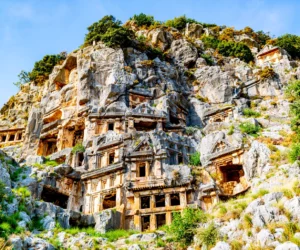Unveiling the Lycian Wonder: A Journey Through Ancient Myra Located in the Lycia region of Anatolia, modern-day Turkey, lies the ancient city of Myra, a captivating historical gem with roots dating back to the 5th century BC. Famed for its impressive rock-cut tombs and grand amphitheater, Myra thrived as a prominent metropolis within the Lycian…
Lycian civilization
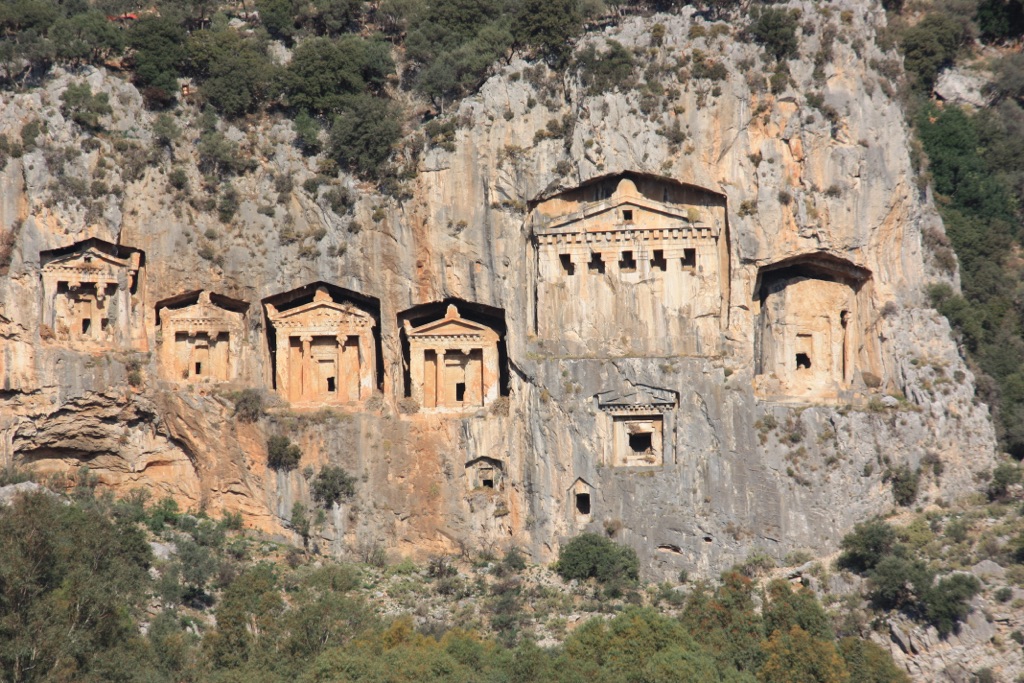
The Lycian civilization was a prominent society that emerged in what is now the southwestern coast of Turkey. Their history spanned from approximately 15th century BCE to the Roman conquest in the 1st century BCE. Lycia is particularly noted for its unique funerary architecture; the Lycians carved elaborate tombs into cliff faces and built prominent stone sarcophagi, many of which can still be seen today. These tombs were often situated high on hills or mountainsides, overlooking the region’s striking landscapes. The Lycian language, part of the Anatolian branch of Indo-European languages, was inscribed on many of these tombs, providing insights into their culture and beliefs.
Lycia’s civilization, though influenced by neighboring Hellenic states and later incorporated into the Persian and Roman empires, retained distinctive customs and government. They formed a federal system known as the Lycian League, one of the earliest examples of a democratic federation in history. This union included representation from different city-states, each maintaining a degree of independence while contributing to collective decision-making in the league. The legacy of the Lycian civilization is not only in their monumental artifacts but also in their contribution to the concepts of federal governance and communal cooperation.
The Lycian League, with its innovative approach to governance, was a beacon of democracy and collective decision-making long before these concepts were widely recognized in the Western world. This federation of city-states, each with its own autonomy yet united for mutual benefit and protection, showcased an early form of democracy that would later inspire other civilizations. The league’s assembly met in a central location where representatives from each city-state gathered to discuss and decide on matters affecting the entire federation. This system allowed for a balanced representation and ensured that no single city-state could dominate the others, a testament to the Lycians’ sophisticated understanding of governance and political harmony.
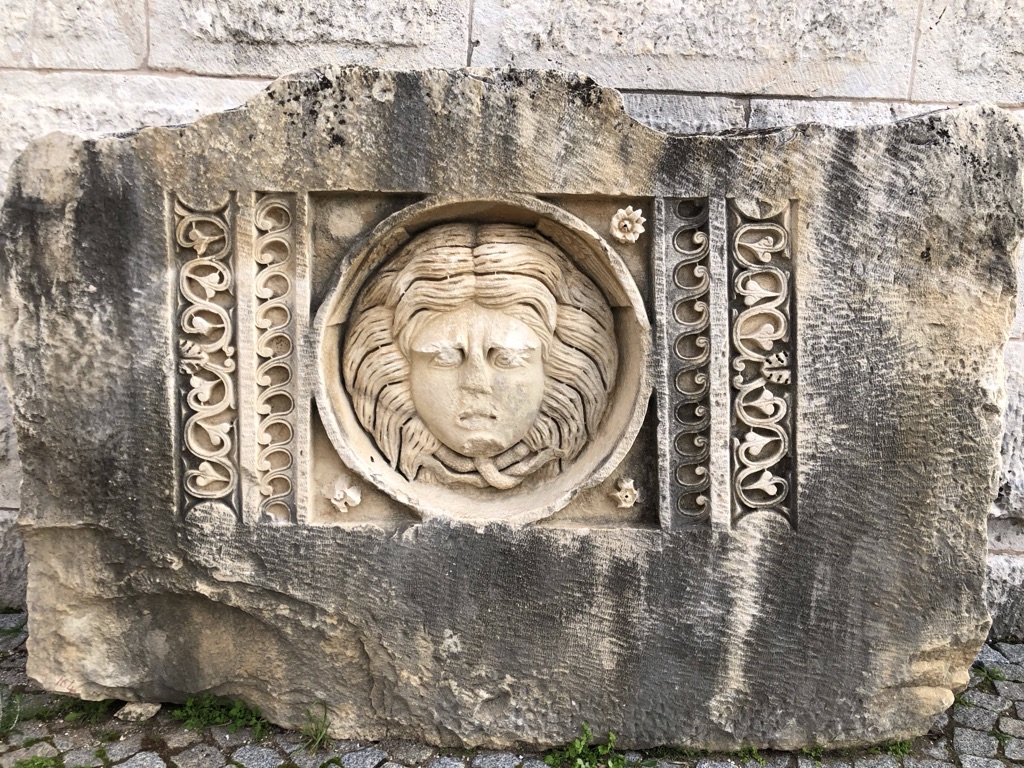
Moreover, the Lycians’ advancements were not limited to their political structures. Their achievements in architecture, particularly their funerary monuments, reveal a society deeply concerned with legacy, honor, and the afterlife. The intricate designs of the Lycian tombs, with their detailed reliefs and inscriptions, offer a window into the world of the ancient Lycians, showcasing their artistic skills, religious beliefs, and social hierarchies. These tombs, carved with such precision and care, were more than final resting places; they were a declaration of identity and status, meant to endure through the ages.
The Lycian language, as preserved on these monuments, provides invaluable insights into their culture. It is a testament to the Lycians’ literary and linguistic capabilities, offering scholars a rare glimpse into the ancient world’s diversity of thought and expression. The inscriptions, often elaborate and poetic, not only commemorate the deceased but also reflect the values, beliefs, and daily life of the Lycian people. Through these texts, historians and linguists can piece together aspects of Lycian society, religion, and governance, further illuminating the complexity and richness of this ancient civilization.
In conclusion, the legacy of the Lycian civilization extends far beyond their architectural marvels and linguistic contributions. It lies in their pioneering spirit of governance, their profound respect for the individual within the collective, and their enduring influence on the concepts of democracy and federalism. As we explore the remnants of their cities and decipher the messages left behind, we are reminded of the enduring human quest for community, identity, and a harmonious society. The Lycians, in their time, achieved a remarkable balance between unity and autonomy, leaving a legacy that continues to inspire and inform even in the modern era.
Frequently Asked Questions About the Lycian Civilization
What race were the Lycians?
The Lycians were an ancient people who inhabited the region known as Lycia, located in what is now the southwestern coast of Turkey. They are considered to be of Indo-European origin, closely related to the Luwians, another ancient people of Anatolia. Over time, the Lycians were influenced by various cultures, including Greek and Persian, but they maintained a distinct ethnic identity, language, and culture throughout their history.
Where are Lycians from?
The Lycians originated from the region known as Lycia, which corresponds to the modern provinces of Antalya and Muğla in southwestern Turkey. This area is characterized by its rugged mountainous terrain and beautiful coastline. Lycia was strategically located between the Aegean and Mediterranean seas, making it a significant maritime and trading center in ancient times.
What was the religion of the Lycians?
The religion of the Lycians was polytheistic, featuring a pantheon of gods similar to those of the ancient Greeks, but with their unique deities and religious practices. Key gods included Leto, who was particularly revered in Lycia, and her twin children, Apollo and Artemis, who were believed to have been born in Lycia. The Lycians also worshipped local gods and heroes, and they practiced hero cults, where deceased warriors and leaders were venerated. Religious rituals and ceremonies often took place in open-air sanctuaries and rock-cut tombs, which were significant features of Lycian religious life.
What was the timeline of the Lycian Civilization?
The timeline of the Lycian civilization spans several millennia, with the earliest evidence of Lycian culture dating back to the Bronze Age, around the 15th century BC. Lycia came under the influence of the Hittite Empire during the late Bronze Age, around the 14th century BC. After the fall of the Hittites, Lycia gained a measure of independence and developed its unique culture and language.
During the first millennium BC, Lycia was influenced by the Greeks, and by the 6th century BC, it was part of the Achaemenid Persian Empire. Lycia regained its independence after the defeat of the Persians by Alexander the Great in the 4th century BC. Following Alexander’s death, Lycia became a battleground for his successors and was eventually incorporated into the Roman Empire in 43 AD.
Under Roman, and later Byzantine rule, Lycia remained an important region until the Arab invasions of the 7th century AD. The Lycian civilization, as a distinct entity, gradually faded after this period, but its legacy is preserved in the rich archaeological remains found in the region.
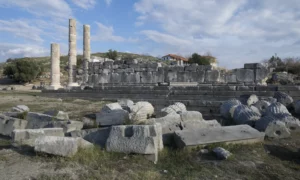
Xanthos-Letoon
Xanthos-Letoon is an ancient archaeological site located in the Antalya province of Turkey. It was once the capital city of Lycia, a historical region in Anatolia. The site comprises two distinct areas: the city of Xanthos and the religious sanctuary of Letoon. These sites are remarkable for their funerary art and are rich in Hellenistic and Roman monuments. Xanthos-Letoon is also notable for its inscriptions in the Lycian language, which have been crucial in understanding this ancient culture. UNESCO recognized the significance of Xanthos-Letoon by inscribing it as a World Heritage Site in 1988, acknowledging its outstanding universal value.
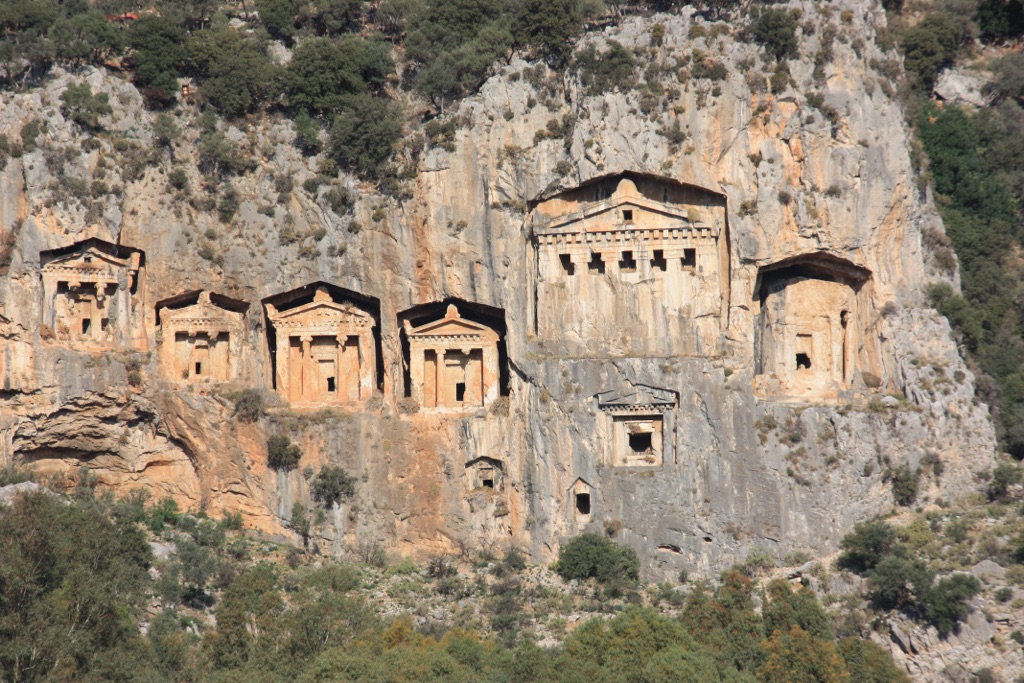
The Lycian Rock Tombs
The Lycian Tombs are an exquisite collection of ancient rock-cut tombs found in Lycia, a historical region in present-day southwestern Turkey. These tombs are renowned for their intricate facades carved directly into the rock faces, resembling the wooden houses and temples of Lycian antiquity. They date back to the 4th century BCE and reflect the complex funerary practices of the Lycians, who believed that a mythical winged creature would carry the dead to the afterlife. The most famous of these tombs is the Tomb of Amyntas, attributed to the Lycian ruler Amyntas, son of Hermapias.

